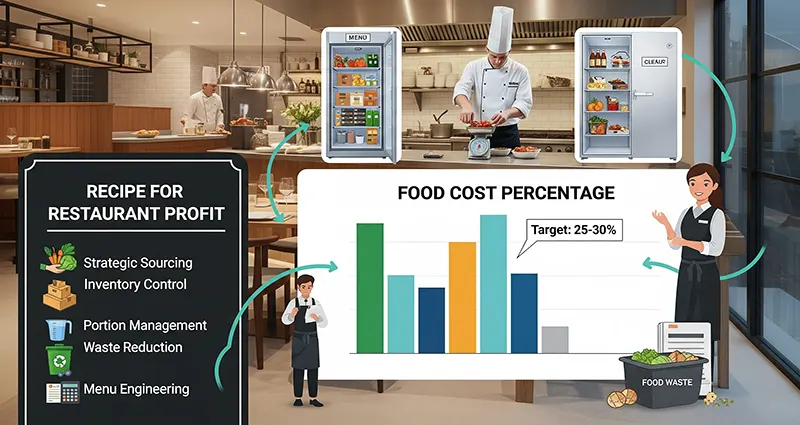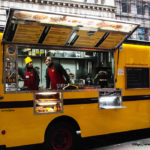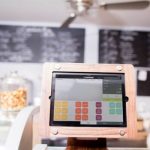Launching a new restaurant is an exhilarating venture, but as any seasoned restaurateur will tell you, the devil is in the details—and the biggest devil of all is often food cost. Food cost percentage, a critical metric that measures how much of your revenue is spent on ingredients, can be the difference between a thriving business and one that shutters its doors. For a new restaurant, mastering this metric from day one is not just a good idea—it’s essential.
What is Food Cost Percentage?
At its core, food cost percentage is a simple calculation:
Food Cost Percentage=(Total Food SalesTotal Cost of Goods Sold (COGS))×100
- Total Cost of Goods Sold (COGS): This isn’t just what you bought in a given period. It’s the value of the ingredients you actually used. The formula is: Beginning Inventory + Purchases – Ending Inventory.
- Total Food Sales: The total revenue generated from selling your food items.
The ideal food cost percentage for most restaurants hovers between 28% and 35%. Going above this range significantly erodes your profit margins, making it difficult to cover other operating costs like labor, rent, and utilities.
A Step-by-Step Guide for New Restaurants
Here’s how new restaurant owners can get a handle on their food costs from the very beginning.
1. Nail Down Your Menu & Recipes
Before you even place your first order, you need to know exactly what you’re selling and how you’re making it.
- Standardize Recipes: Create a “recipe book” for every single item on your menu. Each recipe should list the exact quantity of every ingredient, down to the gram or ounce. This consistency is crucial for both quality and cost control.
- Calculate Plate Cost: Use your standardized recipes to calculate the cost of a single serving for each dish. If a dish uses 4 ounces of chicken breast and the chicken costs $5 per pound, the chicken portion of that plate costs $1.25. Tally up the cost of every ingredient on the plate to get your total plate cost.
- Set Menu Prices Strategically: A common pricing strategy is to use the plate cost to determine your selling price. If your target food cost percentage is 30% and a dish costs you $4 to make, your selling price should be at least $13.33 ($4 / 0.30).
2. Implement Smart Purchasing and Inventory Practices
Your inventory is money sitting on a shelf. The way you buy, receive, and store your goods directly impacts your food cost.
- Find the Right Suppliers: Don’t just go with the first vendor you find. Compare prices, delivery schedules, and product quality from multiple suppliers. Building good relationships can also lead to better pricing and terms.
- Order Smart, Not Big: It’s tempting to buy in bulk to save a few cents per pound, but a new restaurant may not have the sales volume to use it all before it spoils. Order only what you need based on your projected sales to minimize waste.
- Master Your Inventory: Conduct regular, thorough inventory counts—at least weekly, if not more frequently. This helps you track usage, identify discrepancies, and prevent theft or spoilage. Use a “First-In, First-Out” (FIFO) system to ensure older products are used before they expire.
3. Control Waste and Spoilage
Waste is the silent killer of profitability.Every bit of food that ends up in the trash bin is money down the drain.
- Proper Storage: Train your staff on correct food storage techniques. This includes using airtight containers, proper labeling with dates, and storing items at the correct temperatures to maximize their shelf life.
- Reduce Prep Waste: Be mindful of trimmings and scraps. Can vegetable scraps be used for a stock or soup base? Can leftover chicken be repurposed for a staff meal?
- Track Spoilage: Keep a log of all food that is thrown away due to spoilage, over-production, or mistakes.This data is invaluable for identifying problems and adjusting ordering or production levels.
4. Train Your Staff and Promote Accountability
Your team is on the front line of food cost management. They need to understand the importance of it.
- Educate on Portions: Ensure every member of the kitchen staff knows the correct portion sizes. Use measuring cups, scales, and scoops to standardize the amount of each ingredient that goes onto a plate.
- Encourage Responsibility: Create a culture of accountability. When a dish is wasted or an ingredient is handled improperly, use it as a teaching moment, not just a punishment.
- Cross-Utilization: Train your staff to see the value in ingredients. Can a large cut of meat be broken down for multiple menu items? This kind of cross-utilization reduces waste and lowers overall ingredient costs.
5. Regularly Review and Analyze
This isn’t a one-and-done process. Your food cost percentage should be a living metric that you constantly monitor.
- Daily and Weekly Audits: Calculate your food cost on a weekly basis to catch issues quickly. If it’s consistently creeping up, you can investigate the cause immediately.
- Analyze Your Menu: Use your food cost data to identify your most and least profitable dishes. A “menu engineering” analysis can help you strategically promote high-margin items and potentially re-engineer or even remove low-margin ones.
By adopting these practices from the very beginning, a new restaurant can build a solid foundation for financial health. Managing food cost isn’t about being stingy; it’s about being smart. It’s the secret ingredient in a profitable recipe, ensuring that your passion for food translates into a sustainable and successful business.










